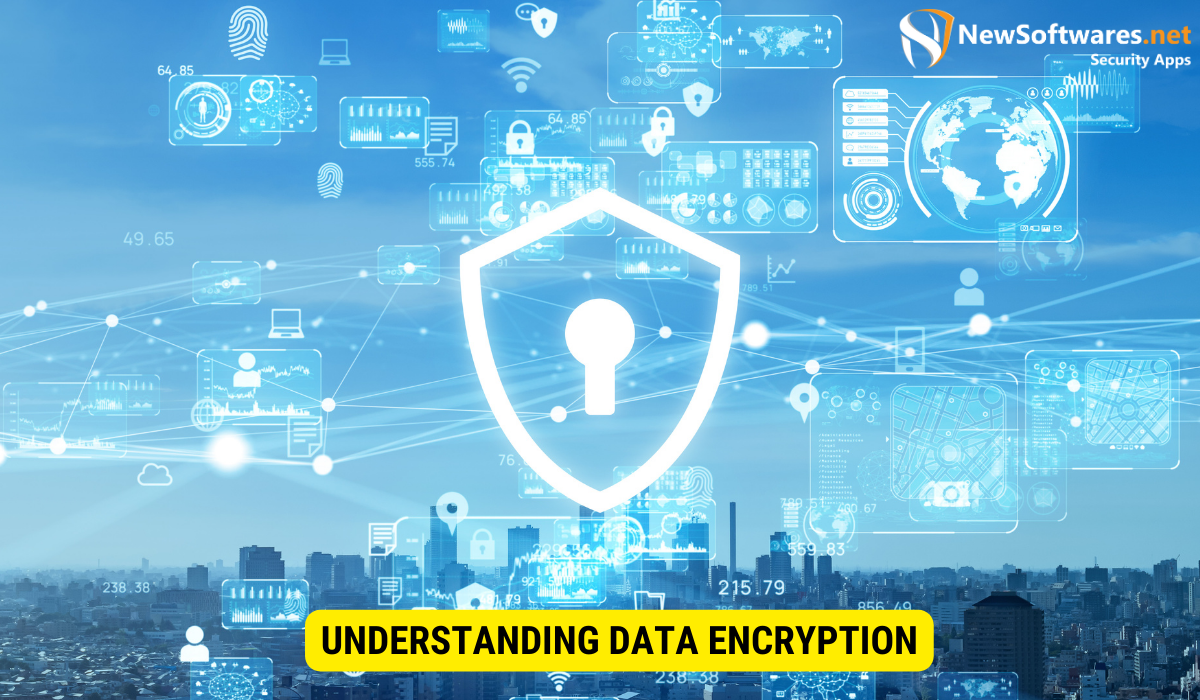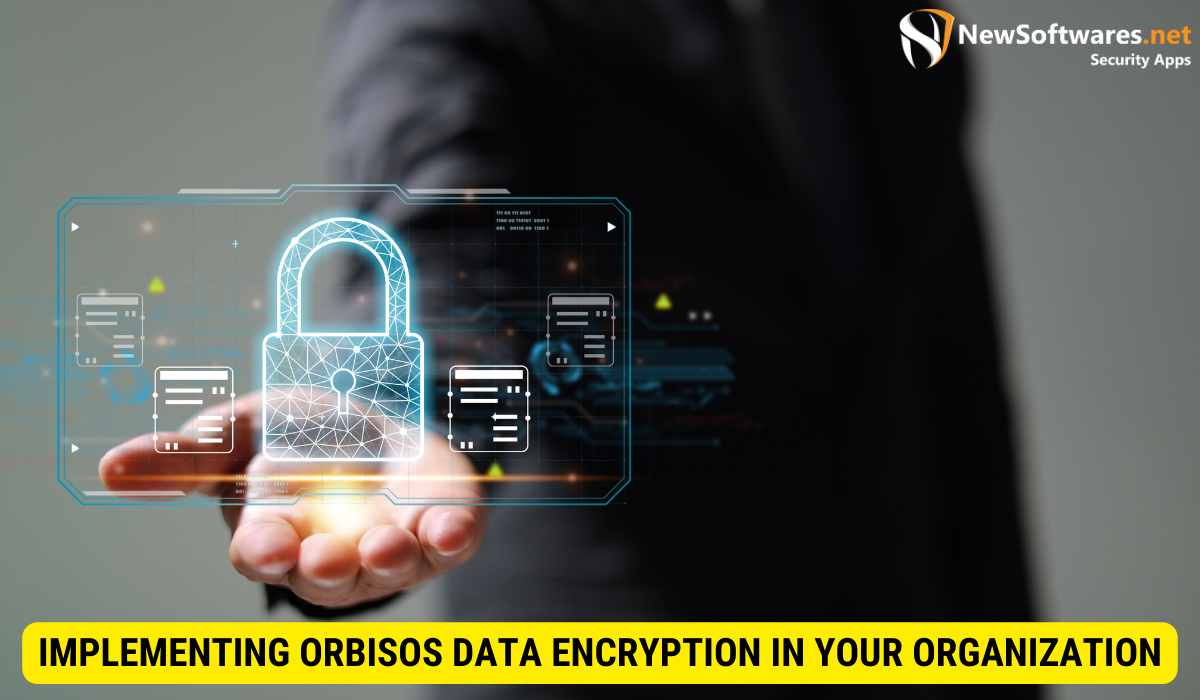In digital age, protecting sensitive information is more important than ever. With cyber fear and data breaches becoming increasingly prevalent, organizations must take preventive measures to ensure the security of their data. One such measure is Orbis OS data encryption, a robust encryption system that provides an added layer of protection for sensitive information. Together, we will delve into the world of data encryption, explore the key features of Orbis OS, understand how it works, and highlight the benefits of implementing Orbis OS data encryption in your organization.
Understanding Data Encryption

Data encryption is the process of converting plaintext data into ciphertext, making it unreadable to unauthorized individuals. Encryption algorithms use mathematical functions to transform data, and a unique encryption key is required to decrypt the data and make it readable again. This makes certain that even if an attacker gains access to the encoded data, they would need the decryption key to make any sense of it.
Data encryption has been a critical aspect of information security for centuries. In ancient times, people used various methods to encrypt their messages, such as substitution ciphers and transposition ciphers. These methods involved replacing letters with symbols or rearranging the order of letters to make the message unintelligible to anyone who did not possess the key to decrypt it. Over time, encryption techniques have evolved, and modern encryption algorithms now use complex mathematical operations and advanced cryptographic principles to secure data.
The Basics of Data Encryption
Data encryption relies on two key components: the encryption algorithm and the encryption key. The encryption algorithm is a set of instructions that determines how the data is transformed, while the encryption key is a series of characters that controls the encryption and decryption process. Strong encryption algorithms and complex encryption keys are essential to ensure the security of the encrypted data.
Encryption algorithms come in various forms, each with its own strengths and weaknesses. Some popular encryption algorithms include Advanced Encryption Standard , Data Encryption Standard, and Rivest Cipher. These algorithms employ different mathematical operations, such as substitution, permutation, and bitwise operations, to scramble the data and make it unreadable. The option of encryption algorithm depends on factors such as the level of security required, the speed of encryption and decryption, and the compatibility with different systems and devices.
Encryption keys, on the other hand, are the secret sauce that makes data encryption possible. They are generated using complex algorithms and can be of different lengths, ranging from 128 bits to 256 bits or more. The longer the encryption key, the stronger the encryption. The encryption key is used by the encryption algorithm to perform the encryption process, and it is also required to decrypt the data. Without the correct encryption key, the encrypted data remains a jumble of meaningless characters.
Importance of Data Encryption
Data encryption plays a vital role in safeguarding sensitive information from unauthorized access. By encrypting data, organizations can mitigate the risk of data breaches and protect confidential data such as financial records, personal information, and trade secrets. Encryption also helps organizations fulfill with data protection regulations and instills trust among customers and business partners.
In today’s digital age, where data is constantly transmitted and stored across various networks and devices, the importance of data encryption cannot be overstated. Encryption ensures that even if an invader intercepts the data during transmission or gains unauthorized access to storage systems, they will only see a jumble of encrypted data that is virtually impossible to decipher without the encryption key. This provides second layer of security and helps prevent unauthorized individuals from accessing and misusing sensitive information.
Furthermore, data encryption is particularly crucial in industries that grip highly sensitive information, such as healthcare, finance, and government. In these sectors, the loss or unauthorized disclosure of data can have severe consequences, including financial loss, reputational damage, and legal liabilities. Encrypting data helps organizations meet regulatory requirements, such as the Health Insurance Portability & Accountability Act in the healthcare industry, and the Payment Card Industry Data safety Standard in the financial sector.
Moreover, data encryption also fosters trust and confidence among customers and business partners. When individuals know that their data is encrypted and protected, they are more likely to share their information with organizations, engage in online transactions, and collaborate on sensitive projects. Encryption acts as a strong deterrent against data breaches and cyberattacks, reassuring stakeholders that their information is in safe hands.
In conclusion, data encryption is a fundamental aspect of information security. It ensures the secrecy and integrity of sensitive data, mitigates the threat of data breaches, and helps organizations comply with data protection regulations. By understanding the basics of data encryption and its importance, individuals and organizations can make informed decisions to protect their valuable information in an increasingly interconnected world.
Orbis OS: A Brief Overview
Orbis OS is a comprehensive data encryption system that offers advanced security features and flawless integration with existing IT infrastructure. Developed by leading cybersecurity experts, Orbis OS provides organizations with robust protection for their sensitive data.
Key Features of Orbis OS
Orbis OS offers a range of powerful features that make it an ideal choice for data encryption:
- Strong Encryption Algorithms: Orbis OS employs state-of-the-art encryption algorithms to ensure the confidentiality and integrity of data.
- Centralized Key Management: Orbis OS provides a centralized key management system that allows organizations to securely store and manage encryption keys.
- Granular Access Controls: With Orbis OS, organizations can implement fine-grained access controls, ensuring that only authorized individuals can access specific encrypted data.
- Seamless Integration: Orbis OS seamlessly integrates with existing IT infrastructure, minimizing disruption and simplifying the encryption process.
- Monitoring and Auditing: Orbis OS provides comprehensive monitoring and auditing capabilities, enabling organizations to track encryption activities and identify potential security threats.
Why Choose Orbis OS for Data Encryption
There are several compelling reasons to choose Orbis OS for your data encryption needs:
- Robust Security: Orbis OS offers advanced security measures to protect your sensitive information from unauthorized access.
- Easy Integration: With its seamless integration capabilities, Orbis OS can be implemented without disrupting your existing IT infrastructure.
- User-Friendly Interface: Orbis OS provides a user-friendly interface that simplifies the encryption process, making it accessible to both technical and non-technical users.
- Scalability: Whether you are a small organization or a large enterprise, Orbis OS can scale to meet your data encryption needs.
- Compliance: Orbis OS helps organizations meet data protection regulations and maintain compliance with industry standards.
How Orbis OS Data Encryption Works
Orbis OS data encryption follows a systematic process to make sure the confidentiality and integrity of your sensitive information.
The Encryption Process
When data is encrypted using Orbis OS, it goes through the following steps:
- Data Preparation: The plaintext data is prepared for encryption, ensuring that it is properly formatted and organized.
- Key Generation: A unique encryption key is generated by Orbis OS, which will be required to decrypt the data later.
- Data Transformation: The encryption algorithm is applied to the plaintext data, transforming it into ciphertext.
- Encryption Key Storage: The encryption key is securely stored in the centralized key management system provided by Orbis OS.
- Encrypted Data Storage: The encrypted data is stored in a secure location, safeguarded from unauthorized access.
Decryption: Accessing the Encrypted Data
To decrypt the encrypted data, the following steps are followed:
- Authorization: Only authorized individuals with the necessary permissions can initiate the decryption process.
- Encryption Key Retrieval: The encryption key is retrieved from the centralized key management system.
- Data Decryption: The encryption key is applied to the ciphertext, transforming it back into its original plaintext form.
- Data Access: Once decrypted, the data is accessible to authorized users and can be used for its intended purposes.
Benefits of Using Orbis OS for Data Encryption
By implementing Orbis OS data encryption in your organization, you can take joy in a wide range of benefits:
Enhanced Security Measures
Orbis OS provides advanced security measures that protect your sensitive data from unauthorized access. With strong encryption algorithms and granular access controls, Orbis OS ensures that only authorized individuals can access your encrypted data.
Compliance with Data Protection Regulations
Data protection regulations, for instance the General Data Protection Regulation (GDPR) require organizations to implement measures to protect personal data. By using Orbis OS data encryption, organizations can demonstrate agreement with these regulations and avoid hefty penalties.
Implementing Orbis OS Data Encryption in Your Organization

Integrating OrbisOS data encryption into your organization is a straightforward process. The following steps can guide you through the implementation:
Steps to Integrate Orbis OS Data Encryption
- Assess Your Data Encryption Needs: Identify the types of data that require encryption and determine the appropriate level of security.
- Select the Encryption Algorithms: Choose the encryption algorithms that meet your security requirements.
- Implement OrbisOS: Install and configure Orbis OS according to the specifications of your IT infrastructure.
- Generate Encryption Keys: Generate encryption keys and securely store them in the centralized key management system.
- Encrypt Your Data: Use Orbis OS to encrypt your sensitive data, following the encryption process outlined earlier.
Maintaining and Updating Your Encryption System
After implementing OrbisOS data encryption, it is essential to maintain and update your encryption system regularly. This includes regularly backing up encryption keys, monitoring encryption activities, and keeping up with the latest software updates & security patches provided by the OrbisOS developer.
Key Takeaways
- Data encryption is the process of converting plaintext data into ciphertext, ensuring the confidentiality and integrity of sensitive information.
- OrbisOS is a comprehensive data encryption system that offers advanced protection features and seamless integration with existing IT infrastructure.
- OrbisOS data encryption works by transforming data using encryption algorithms and storing encryption keys securely in a centralized key management system.
- By using OrbisOS for data encryption, organizations can benefit from enhanced security measures and ensure compliance with data protection regulations.
- Integrating OrbisOS into your organization requires assessing your data encryption needs, selecting encryption algorithms, implementing OrbisOS, generating encryption keys, and encrypting your data.
Frequently Asked Questions
Why is data encryption important?
Data encryption is important because it protects sensitive information from unauthorized access. It mitigates the risk of data breaches and helps organizations comply with data protection regulations.
How does OrbisOS ensure the security of encrypted data?
OrbisOS ensures the security of encrypted data through the use of strong encryption algorithms, granular access controls, and centralized key management. Only authorized persons with the encryption key can access the encrypted data.
Can OrbisOS be integrated into existing IT infrastructure?
Yes, OrbisOS seamlessly integrates with existing IT infrastructure, minimizing disruption and simplifying the encryption process. It can be implemented in organizations of all size.
What happens if the encryption key is lost?
If the encryption key is lost, the encrypted data becomes inaccessible. Therefore, it is crucial to securely store and back up encryption keys to avoid data loss.
Can OrbisOS help organizations comply with data protection regulations?
Yes, OrbisOS helps organizations meet data protection regulations by providing robust security measures and centralized key management. This ensures that sensitive data is adequately protected and can be audited for compliance purposes.
Conclusion
Protecting sensitive information is paramount in today’s digital landscape, and OrbisOS data encryption offers a reliable solution. By implementing OrbisOS, organizations can enhance their security measures, comply with data protection regulations, and safeguard their valuable data from unauthorized access. With its advanced features, seamless integration, and user-friendly interface, OrbisOS is the ideal choice for organizations seeking to protect their sensitive information.
